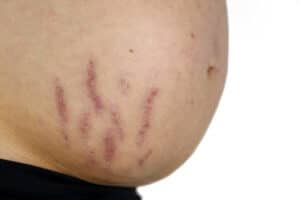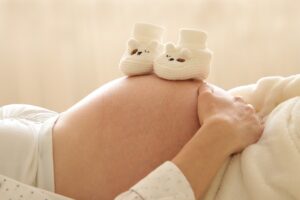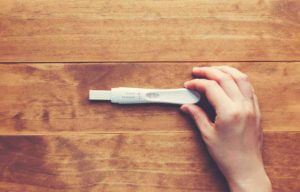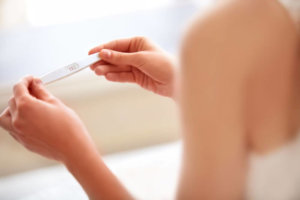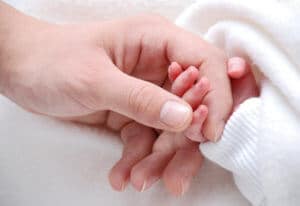Many mothers reach for the breastfeeding pill after the birth of their child if they do not want to become pregnant again immediately. Because the fact that breastfeeding is not a contraceptive has now probably reached the last bedroom.
But what are the advantages and disadvantages of the breastfeeding pill and what alternative contraceptive methods are there? When does the pill start to work? What is the difference between the birth control pill and how does hormone-free contraception work? Get answers to these and more questions here.
Table of contents
Getting Intimate After Breastfeeding? – But Safely
We can’t predict when you’ll feel like having sex again after pregnancy, but we can tell you that you should think about birth control methods if you don’t feel like getting pregnant again.
After giving birth, your cycle will still be irregular and therefore unpredictable. However, breastfeeding alone will not provide you with contraception – as many parents who have enjoyed their togetherness during breastfeeding too carelessly can confirm.
If you don’t want to get pregnant again (so quickly), you should therefore use safe contraceptive methods.
Breastfeeding Pill To Prevent Pregnancy
If you want to breastfeed your baby, the breastfeeding pill is one of the most common methods of contraception. It is prescribed by your gynecologist and replaces the birth control pill you may have taken before becoming pregnant.
The breastfeeding pill is a type of mini-pill that works without estrogen, but with the hormone desogestrel. This hormone is not supposed to affect the quantity and quality of breast milk, which is why the breastfeeding pill is prescribed during the time you are breastfeeding your baby. In comparison, the regular pill could harm your baby through breast milk.
How Does Desogestrel Work?
The desogestrel in the breastfeeding pill causes the lining of the uterus to thicken. This makes it harder for sperm to enter the uterus. It also makes it harder for eggs to implant on the inside of the uterus, so ovulation is suppressed in 90 percent of cases. With this active ingredient, the breastfeeding pill is one of the safe contraceptive methods.
How Is The Breastfeeding Pill Taken?
Just like the mini-pill, the breastfeeding pill is taken continuously for 28 days, starting on the first day of menstruation or between the 21st and 28th day after delivery. The one-week break that you may be familiar with from the birth control pill is therefore omitted.
This is convenient for many women because the start of a new blister immediately follows the use of the previous one. The breastfeeding pill is therefore also one of the contraceptive methods with a high level of user safety.
Like all pills, the safety of the breastfeeding pill is impaired if you suffer from vomiting and diarrhea. In these cases, you should use other contraceptive methods, such as a condom or diaphragm, for the current cycle if necessary.
When Does The Pill Start Working?
The breastfeeding pill works, just like other pills, from the day you first take it, when it starts on the first day of menstruation. If you want to take the mini pill immediately after giving birth, you start between the 21st and 28th day after. In this case, the pill will also start to work on the first day of use.
If you take the pill on the second to the fifth day of menstruation or later than the 28th day after delivery, it will only be effective after seven days. In these cases, you should use additional contraceptive methods, such as a condom, during the first week of taking the pill.
What Are The Side Effects Of The Breastfeeding Pill?
Due to the lack of estrogen, the breastfeeding pill has fewer side effects on the body than the classic birth control pill, which contains estrogen and progestin. In particular, the risk of thrombosis and embolisms is comparatively reduced with this pill.
The breastfeeding pill or mini-pill can also be an alternative for non-breastfeeding women who cannot tolerate estrogen. 20 to 30 percent of women who take the breastfeeding pill report bleeding, which is due to hormone balance settling and is usually harmless.
Another 20 percent have infrequent bleeding or no bleeding at all. If bleeding occurs more frequently, you should consult a doctor if it lasts for a long time or is very heavy.
Other side effects of the breastfeeding pill can be:
- Acne/pimple formation.
- Headaches and breast pain.
- Weight gain.
- Mood swings.
- Sexual unwillingness.
In general, the same applies to the breastfeeding pill, but also all other contraceptives: If you feel uncomfortable taking it and suffer from side effects, you should discuss the topic of the breastfeeding pill, mini-pill, but also other contraceptive options with your doctor.
Alternative Contraceptive Methods To The Breastfeeding Pill
There may be several reasons why you are looking for alternatives to the pill. Maybe you don’t want to take a daily medication, maybe you are looking for more long-term contraceptive methods or want to use hormone-free contraception?
Pill or IUD
A long-term alternative to the pill may be the hormonal IUD or copper IUD. Both contraceptive methods are inserted directly into the uterus and work locally for several years each.
IUDs can be removed at any time if there is a desire to have a child, but for cost reasons, it is recommended that they remain in the uterus for a longer period. A hormone or copper IUD can be inserted at the earliest six to eight weeks after delivery and only when the uterus has receded.
How Does The Hormonal IUD Work?
The hormonal IUD, as its name suggests, belongs to the group of hormonal contraceptives. It is inserted into the uterus and releases hormones permanently for three or five years, depending on the model, to prevent pregnancy.
One advantage of the hormonal IUD over the breastfeeding pill is that women do not have to worry about contraceptive methods for a long period. Once the IUD is in place, it permanently prevents pregnancy. Because it is estrogen-free, it can be used safely during breastfeeding.
Many women also find it pleasant that menstrual bleeding gradually becomes weaker and, in many cases, eventually stops. Others, however, are bothered by the fact that they can no longer firmly count on bleeding.
One disadvantage is the relatively high initial cost, but this is put into perspective the longer the IUD is in place. Like all hormonal contraceptives, the IUD can cause discomfort. Although inserting the IUD is not fundamentally painful, some women find it uncomfortable.
How Does The Copper IUD Work?
Unlike the breastfeeding pill, the copper IUD is a hormone-free contraceptive that does not alter the menstrual cycle. Depending on the model, a copper IUD can remain in the uterus for three years or longer.
Unlike the hormonal IUD, no hormones are released into the uterus, but small amounts of copper. The copper changes the lining of the uterus so that eggs cannot implant. In addition, sperm become less motile and less capable of fertilization.
The advantage over the breastfeeding pill would again be the user safety – no more daily pill intake! In addition, contraceptive protection remains even after diarrhea and vomiting. Many women also appreciate the fact that the copper IUD is a hormone-free contraceptive.
Especially after the birth of a child and because they were already able to do without hormonal contraceptive methods during pregnancy, many mothers do not want to take hormones again. The copper IUD as hormone-free contraception can offer a long-term alternative to the mini-pill.
On the downside, however, many women report that they found inserting the copper IUD painful. For most women, this hormone-free contraception increases menstrual bleeding, and in some cases also the pain associated with it. Compared to the hormone IUD, the cost of a copper IUD is also somewhat higher.
Pill or Condom?
Another non-hormonal contraceptive method is the condom, which parents in a committed partnership may not use as often. It acts as a barrier so that the penis and vaginal mucosa do not even touch. In addition to pregnancy, the condom also prevents several sexually transmitted diseases.
Compared to the mini-pill, it offers the advantage that it can be used individually and does not require daily use. If used properly, the condom is a safe contraceptive.
However, this requires that it is used consistently and correctly. For many couples, the condom is therefore only an interim solution until they have decided on the most suitable contraceptive method.
Pill or NFP?
If you want to do without the mini-pill and other hormonal contraceptives permanently, NFP (natural family planning) can also be an alternative. With this method, you evaluate your body symptoms, which show you fertile and infertile days in your cycle.
Signs of this can be your waking temperature in the morning, but also the appearance of the cervical mucus. During the unsafe or fertile days, additional contraception must be used to prevent pregnancy.
Learning this contraceptive method takes time and practice. Experts recommend at least three months as the time in which NFP should be rehearsed. In addition, Natural Family Planning only makes sense when the hormone balance is leveled.
The extent to which NFP can be used during breastfeeding should therefore be clarified with your gynecologist. However, it may be a good alternative to the mini-pill after breastfeeding.

